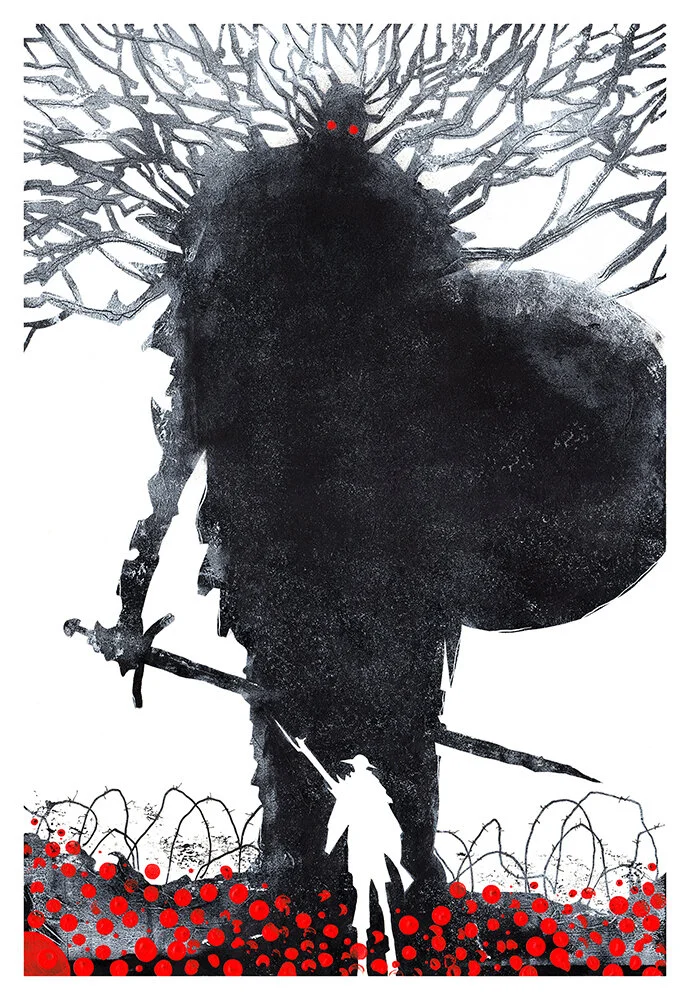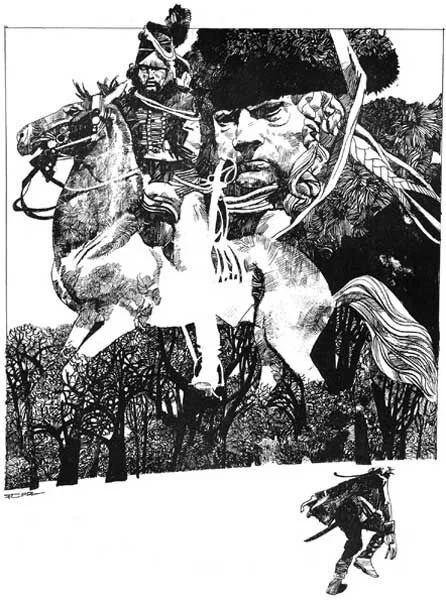Over the past couple of weeks, I’ve begun to search for my art parents. Rendering in ink is something I’ve been focused on lately, so I’ve also been looking for masters of pen & ink to study and emulate. Looking at the Spectrum Awards, the Beautiful Bizarre Awards and the Caldecott, I found a lot of inspiring artists but very few used pen & ink (Jeffrey Alan Love and Sean Andrew Murray were the standouts for me).
Jeffrey Alan Love
Eventually I remembered I had a volume called The Illustrator in America: 1860-2000. Digging through it, I found a trove of beautiful pen & ink drawings done by early 20th century illustrators (e.g. Franklin Booth, James Clement Coll, Charles Dana Gibson, James Montgomery Flagg, William Starling Sullivant, etc). Inspired by these master illustrators, I decided to play with a crow quill pen that Mack had given me some years back. I liked the line variety that it offered, but I found the nib kept getting clogged with paper fibers (probably due to poor paper quality) and got annoyed when the pen would sputter and run dry. So I’ve decided to stick with felt-tip pens for now (at least until I become more competent at drawing). In the future, when I revisit nib pens, I’ll try a fountain pen instead.
Franklin Booth
You can learn a lot by studying the old masters, but I decided I wanted to find modern masters using modern pens. Eventually it dawned on me that if I was going to find modern masters of pen & ink, the world of comics would be the best place to look.
Over the past week, as I’ve surveyed comics, I’ve enjoyed discovering comics traditions that have flourished outside of America: the Franco-Belgian bande dessinée, the Italian fumetto, and Argentine comics. It’s also been interesting to learn about how various masters were influenced by their predecessors and their peers. At my first encounter with Moebius’s work, I fell in love with his economy of line and bright colour palette. It felt airy and refreshing compared to the muscular drama of superhero comics. Later, when I learned about Herge and the claire ligne (clear line) style, I could see how Moebius had adapted claire ligne and made it his own.
Moebius
As far as artistic parents go, I’m not ready to adopt anyone yet. But I’ve definitely found masters in the comics’ medium whose work I admire: Moebius, Alberto Breccia, and Sergio Toppi being among them. So I’m going to spend some time studying these masters and see where that takes me.
Sergio Toppi



